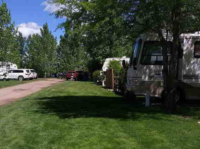Lethbridge-based nuclear engineer hopeful province will consider nuclear energy production
By Tim Kalinowski on May 5, 2021.
LETHBRIDGE HERALDtkalinowski@lethbridgeherald.com
Lethbridge-based retired nuclear engineer Cosmos Voutsinos says Albertans should be excited about the potential of Small Modular Reactors (SMRs), and he is hopeful the provincial government will seriously consider this form of nuclear energy production in its longer term investment strategy going forward.
Voutsinos says SMR technology not only provides an abundant source of clean energy, it also makes the use of nuclear energy much safer.
“The three (well-known) accidents at Fukushima, Three Mile Island and Chernobyl have contributed quite a few positive things to the nuclear industry,” he explains. “The negative is the fear and lack of public acceptance of nuclear power. The positive thing is the industry of this relatively new technology was forced to come up with designs that address all the public concerns.
“We now can jump ahead through several natural stages of the evolution of the technology into the SMRs (Small Modular Reactors). The SMRs are generation four, now we call them. But the extent of the improvements could easily be called generation 10.”
Voutsinos says SMRs address all the major concerns the public might have about nuclear technology. He ticks them off one at a time in relation to the previously mentioned high-profile nuclear accidents which took place at Chernobyl, Three Mile Island and Fukushima, which all suffered what is known as meltdowns when problems with the cooling system produced so much steam it, in his words, “blew the roof off.”
“The loss of cooling accident happens only in water-cooled large reactors,” he explains. “The steam is too much and it blows off the roof. The SMRs are either cooled by liquid metal or liquid salt. Both those coolants are in atmospheric pressure– they are not pressurized so they cannot be exploded. So you cannot blow the roof. You cannot have a Chernobyl.
“The fuel is already in liquid form,” he adds, “so it cannot meltdown. The SMRs are also built with passive controls. What I mean by that is the materials have been selected so the temperature of the materials, the thermal expansion of the materials, triggers the controls. That way it does not need an operator (to manually control it).”
The SMRs also use only small fuel loads, says Voutsinos, eliminating most of the associated waste, and the reactors come pre-loaded with enough fuel sealed inside them for 20 years. After which, he says, the manufacturer can simply come in, load the spent reactor core on a truck, swap it out with a new reactor core, and take the old one away for repurposing.
The fuel needed for one of these 5 MW SMRs, Voutsinos would propose for Alberta, would actually be supplied by the spent fuel used in other contemporary reactors, helping to solve another large problem of the nuclear industry at the same time.
“The spent fuel is all taken care of by design,” Voutsinos explains. “That way you don’t have the problem with spent fuel storage. After the (repurpose) procedure what is left is a much lower volume of contaminants with much lower amounts of radiation, and it lives a lot less time.”
Since no water is used in the reactor, he says, that also eliminates the need to deal with heavy water.
Voutsinos concedes Alberta already has an abundance of energy production, when asked why such an investment, (a 5 MW SMR would cost about $17 million), makes sense for Alberta at this time.
However, he states, most energy in Alberta is supplied by oil which needs a lot of natural gas to process.
The SMRs could be used to produce cleaner burning hydrogen gas in abundance to replace the dependence on natural gas, which is a finite resource, Voutsinos says.
By producing more nuclear energy, considered a renewable form of energy, would also help eliminate Alberta’s dependence on hydro-carbons over time, and by using thorium fuel, he says, it would be a much cleaner form of energy than anything else we have today.
Voutsinos says the first pilot SMRs should be ready for testing in 2026, and be commercially available by 2028.
Follow @TimKalHerald on Twitter
Follow @@TimKalHerald on Twitter
4-3




